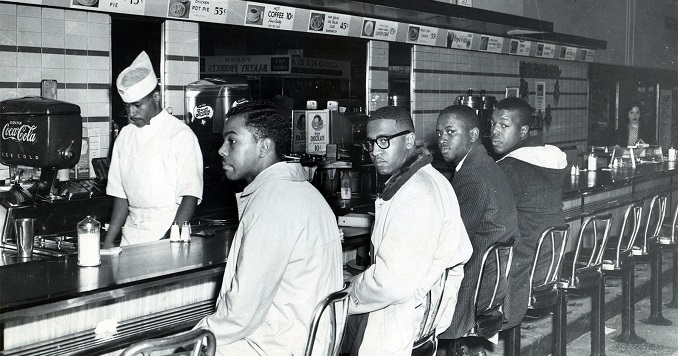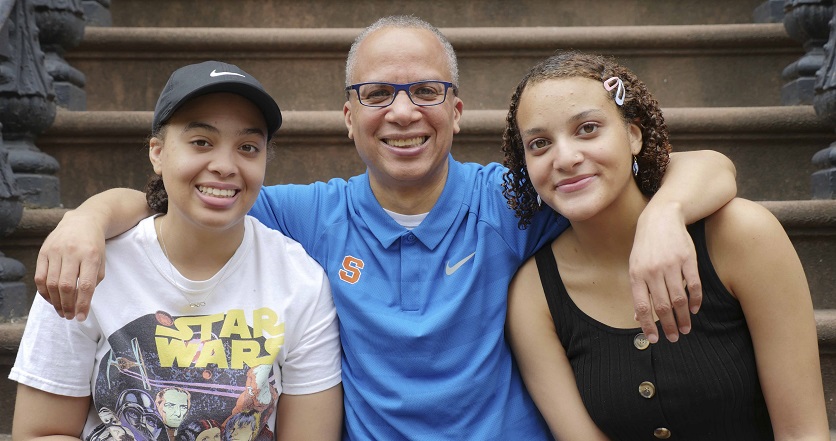Upholding Human Dignity: A Conversation with Rev. James Lawson

Reverend James Lawson, an American civil rights leader, is a prominent social activist and a man described by his close friend and colleague, Dr. Martin Luther King Jr., as the leading theorist and strategist of nonviolence in the world. At the age of 92, Reverend Lawson continues to give lectures and seminars on nonviolence. In the following interview in the January 1, 2021, issue of the Seikyo Shimbun, Soka Gakkai’s daily newspaper, Reverend Lawson discusses social divisions, the Civil Rights Movement, nonviolence and the Soka Gakkai.
2020 was a year in which the US and the whole world were shaken by the COVID-19 pandemic and events such as the presidential election and the Black Lives Matter movement. In the midst of this, the divisions among people are becoming more and more pronounced. What are your thoughts?
The first thing we need to understand is that there is a problem with the underlying idea and structure of Western civilization. In 15th century, Western civilization crossed the sea with guns and soldiers and conquered the world. And they transmitted a kind of “notion” that “violence is the greatest force on Earth, and it creates the greatest change.” And, as you know, Karl Marx came along in the 19th century saying that “revolution is violence.”
I believe that the root of racism, sexism and plantation capitalism lies in the violent soil of this Western civilization and its pursuit of wealth.
To be a human being, you have to learn to reject despising other human beings and have compassion for them.
Today, many people have false preconceived definitions of “others” and have lost their reason and compassion. To be a human being, you have to learn to reject despising other human beings and have compassion for them. You have to recognize that they have same human gifts that you have and acknowledge it.
The division of American society shows that many people are losing sight of this way of human being and have a hole down the middle of their souls. Both blacks and whites must heal the wounds of their souls. The recovery of the human soul is a challenge for world’s religions.
As a key figure in the American Civil Rights Movement and a confidante of Dr. Martin Luther King Jr., what would you describe as the driving force of the movement?
The first reference to civil rights can be found in Civil Rights Bill of 1866. After the Emancipation Proclamation and the Civil War, this bill was finally enacted and gave blacks equal rights, like other Americans.
Thus, the battle for civil rights has a long history. And I call the 20th-century civil rights movement the “nonviolent movement of America.”
When I was in elementary school, I lost my temper and smacked a white child who insulted me with racist epithet. Learning about it, my mother confronted my anger and said, “violence is absolutely not allowable.” She also said, “the way of God, the way of Jesus, was the way of finding a better way.”
I have been looking for that better way ever since. There was a time when I refused to serve in the Korean War and was imprisoned for more than a year. I was determined never to obey laws that lead to any forms of violence and discrimination.
In the 1950s, I studied Mahatma Gandhi’s philosophy of nonviolence. The greatest power of mankind is not violence but the power of nonviolence. This was his point.
Love is the energy that nurtures human beings. It is compassion that allows us to create societies where everyone has access to life itself. Such nonviolent ideas can be also found in world religions.
King and I led the movement with this nonviolent thought. As he stated, “Injustice anywhere is a threat to justice everywhere.” We demanded that liberty, equality and justice become the core virtues of our country.

In fact, following our movement, Hispanics, Indians and everyone else woke up. Sexual minorities and people with disabilities also started saying, “stop discrimination!”
In this way, the nonviolent movement caused phenomenal social transformation. It was very much like the revolutionary period which produced the Declaration of Independence. For the first time in history, America was transformed not by violence but by nonviolence.
The Soka Gakkai upholds the philosophy of human revolution in which the transformation of one person can lead ultimately to the transformation of the world. What do you think of this idea?
The pillar of the nonviolence is also the transformation of human beings themselves. We call it conversion.
The greatest power of nonviolence is to fundamentally transform people’s minds and lives. I have seen with my own eyes many people who went through conversion, as if they were beginning to walk from darkness into the light.
Personal transformation will change the family, society, the nation and the world. This is also a philosophy of nonviolence.
Dialogue is the most important tactic of social justice.
As a nonviolence practitioner, I want to emphasize the importance of dialogue. Dialogue is the most important tactic of social justice. Face-to-face dialogue will help people walk through personal conversion and come into union. We can spread the wave of change from here to politics and economics.
President Daisaku Ikeda made his first visit to the United States in 1960, when the American Civil Rights Movement was unfolding. This trip marked the beginning of his efforts to spread the philosophy of Nichiren Buddhism, the core of which is respecting the dignity of all life. Soka Gakkai has now expanded to 192 countries and regions and is striving to promote grassroots dialogue that transcends racial and ethnic barriers.
Gandhi, King, and Dr. Ikeda very much have something in common. First, is religious faith. Secondly, is the conviction that their faith has to be engaged through them in personal work. They reach out to others with mercy, engaging in dialogue. Third, is that they committed their lives to realizing noble ideals. There is common love of humankind.
Dr. Ikeda hopefully will continue to live a long life, and his life will certainly be about continuing the work he has been engaged in.
The world’s religions need to follow the Soka Gakkai’s example of creating peace and conversation. They need to follow the Soka Gakkai’s way that inspires people to break down their inhibitions against truth and join the human family. I want to say that the Soka Gakkai is on the side of history. The Soka Gakkai is on the side of eternity.
How many people do we need to change the world? Actually, it doesn’t take a majority. According to new scholarly studies, the world will change if 3.5 percent of people are committed to a nonviolent movement.
In Nashville, where I organized the sit-in campaign, only about 5 percent of the population actually organized the cause. They changed the whole city and moved the entire country.
Here is an important lesson in 20th-century history. In other words, the actions of a handful of people can change the minds of people all over the world.






